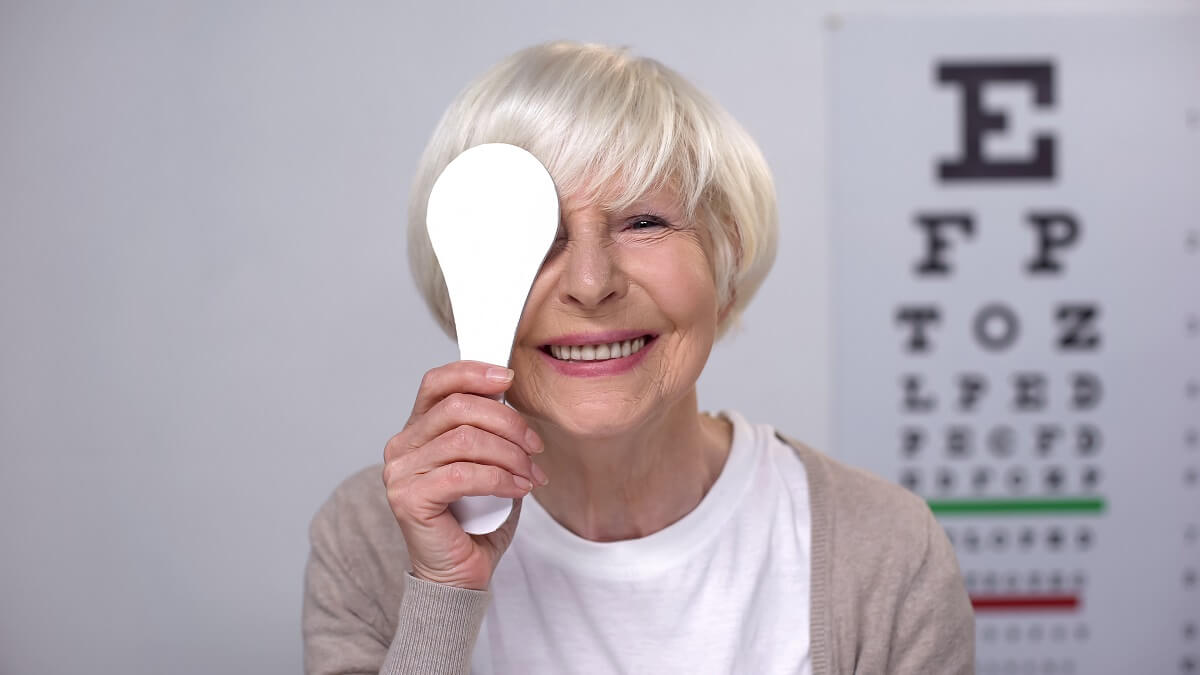Advancements in science have helped humans live longer, healthier lives than any previous generation. But most of those of us over 50 know all too well that things can still go wrong as we age. Dodgy hips and knees and other forms of arthritis are common. Many over-50s will have succumbed to the need for reading glasses. And on the subject of eyes, another potential hurdle for ageing people is cataracts.
I’m lucky enough not to have been visited by the scourge of cataracts. Not yet, at least. But I do know a little bit about how disruptive they can be. My dad had his cataracts fixed many years ago and, unusually, my son who is in his 20s, has cataracts.
For my son this is particularly frustrating, as he has been urged not to have them treated until he is much older. Generally speaking, though, there’s no such barrier for those aged over 50. Finally, an advantage to growing older!
What are cataracts?
If you’re going to have an operation to treat your cataracts, it’s probably a good idea to know what they are. In simple terms, a cataract is a clouding of the lens of the eye. In most people, this clouding develops slowly, with symptoms appearing gradually.
Such symptoms can include blurred or distorted vision, sensitivity to light and glare, or a sense of seeing double. You may see ‘halos’ around lights or find that objects have a brown or yellow tinge.
Over a long period, cataracts can eventually result in blindness. That’s a scary prospect, but in the vast majority of cases, treatment is available and successful.
That treatment involves removal of the clouded lens with an artificial lens inserted in its place. After having the operation and recovering, many patients report a huge improvement in their vision. For many, the progress of the cataract has been so slow they haven’t realised the extent of their sight deterioration.
One eye at a time, or both at once?
Most patients will develop cataracts in both eyes. However, for almost as long as cataract surgery has been performed, treating one eye at a time has been recommended.
On the surface of it, that seems like a sensible idea. During recovery the patient’s vision will be severely impaired, so having one ‘good’ eye will be useful. There is also a low risk of infection in both eyes if they are treated at the same time. Third, the surgeon can use the results of the first operation to inform their approach to the second eye procedure.
However, performing surgery on both eyes on the same day also has its advantages. The obvious one is savings in cost and time. Clearly one visit to the surgeon will be cheaper than two, factoring in things such as surgery preparation. For patients who have both eyes done at once, the overall recovery period is shorter, too.
A recent study comparing the one-at-a-time versus two-at-once approach found no real difference in risk for healthy people. But it did highlight the warnings of some experts with regard to the latter approach. These were the rare but severe risk of endophthalmitis and the risk of refractive surprise (significant deviation from predicted refraction).
Endophthalmitis is an inflammation of the inner coats of the eye, and is a potentially blinding condition. That’s not something anyone would want, but it is a rare occurrence.
In Finland, Spain and Canada, treating both eyes at once is now common practice. In Australia, the continuing recommendation is having the procedure done one eye at a time, with several weeks’ break.
Whether that will change anytime soon is unclear. It’s a matter of ‘watch this space’.
Have you had cataract surgery? What sort of experience did you have? Let us know via the comments section below.
Also read: Four tips for looking after your eye health this winter
Health disclaimer: This article contains general information about health issues and is not advice. For health advice, consult your medical practitioner.


I had cataract procedures about 5-6 years ago, one eye at a time. Huge improvement in my vision in the short term (could read normally without glasses) but after a year or so some of the cataract cells regrew. These were blasted with laser and again my vision improved. Now I can still read without glasses in good light unless the print is dull or very small. I use magnifying glasses in this case and also when using the computer. The magnification makes reading easier and more comfortable. My vision is not crystal clear but much better than it was when I had the procedure.
Glad to hear that yours went do well, as most do ,I was the unlucky one with no improvement at all ,in fact condition is overall worse.even following laser treatment . I was not happy with progress of first eye and should have cancelled the second eye operation, now left with chronic dry eye syndrome and some difficulty with focus some 3 years later. However nothing is guaranteed and you are warned of the risks so just move on with life.
I had mine done fourteen years ago, a fortnight apart. I had worn glasses for short sightedness since I was twelve, and hated them. Used contact lenses until I was 65, then, with the diagnosis of cataracts, went for the operation (s). And I could see!! Best thing I ever did! However, I now needed glasses for reading and the intricate craft work I do…but the $5 cheapies are fine for that!
Caused by years of glucose spikes in your blood. Basically change your eating habits, cut out sugars and go for savory breakfast.